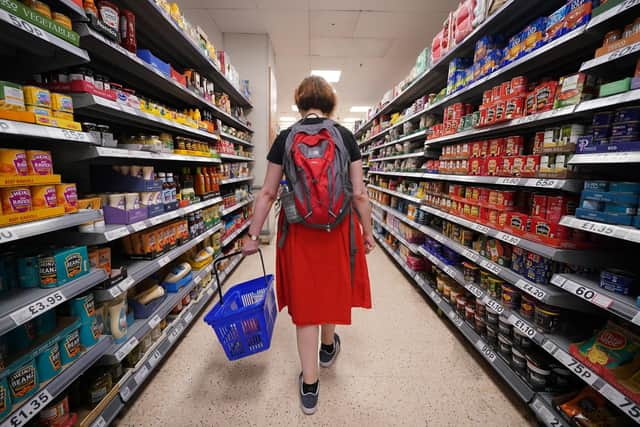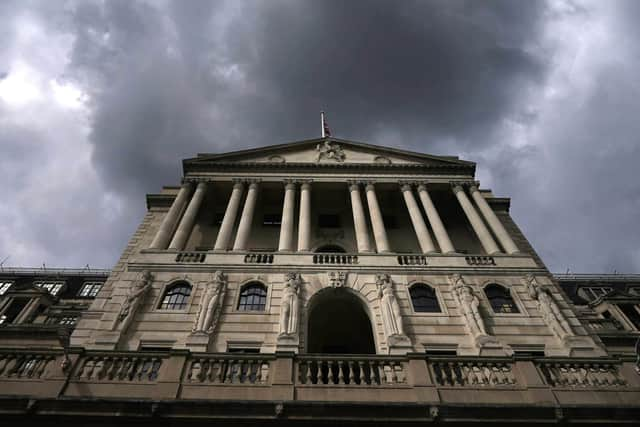UK inflation milestone: Why prices are cooling and when interest rates will be cut
The first cut in interest rates since 2020 is on the cards but may not come until later this summer despite the UK reaching an inflation milestone.
At the headline level at least, those hefty price rises that have plagued consumers and businesses seem to be under control. According to the latest stats from the Office for National Statistics (ONS), the annual measure of consumer prices index (CPI) inflation fell to 2 per cent in May, down from 2.3 per cent a month earlier and returning to the Bank of England’s target level for the first time in almost three years. Most prices are still rising - there are a few deflationary signals out there - but not at the rate seen over the past couple of years. Rewind to the dying months of 2022 and inflation was sitting above 11 per cent.
Advertisement
Hide AdAdvertisement
Hide AdSo, time for a national celebration perhaps? A Conservative government battling to stay in office will certainly be looking to capitalise on any feel-good factor as this is likely to be the last significant economic release before the general election on 4 July. However, despite those cooling prices in the shops and for other goods and services, millions of mortgage holders and borrowers have been feeling the pain inflicted by higher interest rates. A series of rate hikes from the Bank of England has pushed the official base rate to a 15-year-high of 5.25 per cent. And the big question remains - when will those rates start to come down?


The seemingly upbeat inflation numbers will be watched closely as central bank policymakers gather to announce their latest decision on interest rates on Thursday. However, they are widely expected to hold fire on any cuts until after next month’s general election. There is a slim chance of action this week and the outcome of the voting among the nine-strong monetary policy committee (MPC) will be studied for any signs of a growing split. But attention is likely to focus on the next MPC meeting, on 1 August, with the election out the road and additional inflation data for June available to scrutinise.
And while that headline measure has returned to target there will be concerns on Threadneedle Street over residual stickiness in services inflation. That measure fell from an annualised rate of 5.9 per cent in April to 5.7 per cent in May, but remains stubbornly high. It is one of the factors that has been responsible for staying the Bank of England’s hand in bringing interest rates down.
On a more positive note, the ONS said food inflation fell back to 1.6 per cent last month - the lowest since October 2021 - which was the biggest factor in pulling the overall level of CPI inflation lower. At one stage food inflation reached almost 20 per cent, in March last year, but has been steadily easing since then. Energy prices have also come off the boil. However, last month saw prices rise at the petrol pumps, while air fares also lifted. The average price of petrol rose by 0.7p per litre between April and May to stand at 148.8p per litre.
Many analysts now expect the Bank to kick off its monetary easing process in August, though it’s far from a certainty.


Laura Suter, director of personal finance at investment platform AJ Bell, said: “The future path for inflation - and so rates - will be impacted by whoever becomes prime minister and how their fiscal policy shapes up. It’s highly likely the Bank will want to wait to see the outcome of the election and the final economic plans before making that first cut. With no meeting in July, that means all eyes are now firmly on the August MPC meeting for our first potential cut to rates.”
Luke Bartholomew, deputy chief economist at Scottish funds heavyweight Abrdn, said news of the fall in headline inflation would come as “extremely welcome news to the Bank of England”. He added: “The big question now is whether underlying inflation pressures in the economy are consistent with inflation staying around 2 per cent in the medium term, or whether inflation will start to edge higher again once favourable base effects fade. On that front, there is still evidence of residual stickiness in services inflation, reflecting the strength of wage growth recently. That is why an interest rate cut [in June] is still very unlikely. But we think the Bank’s communication will set out a path for a cut in August, which is now looking increasingly likely.”
Among those treading a more cautious path is Thomas Pugh, economist at audit, tax and consulting firm RSM UK, who believes that another miss on the services inflation front has reduced the chances of an August rate cut.
Advertisement
Hide AdAdvertisement
Hide AdHe notes: “The slowdown in headline inflation was driven by a larger-than-expected fall in goods inflation. However, services inflation, which is a better measure of underlying price pressures in the economy than headline inflation, missed expectations again, only slowing to 5.7 per cent versus expectations of 5.5 per cent. This will raise concerns on the MPC that underlying price pressures in the economy aren’t slowing as quickly as expected and makes an August interest rate cut less likely.
“The outlook for 2025 partly depends on whether a new government is forced into raising more revenue in the next parliament, which could give the Bank more room to cut interest rates or whether it borrows more, which would argue for fewer rate cuts. Our base case is for interest rates to end next year at 3.5 per cent.”
Comments
Want to join the conversation? Please or to comment on this article.